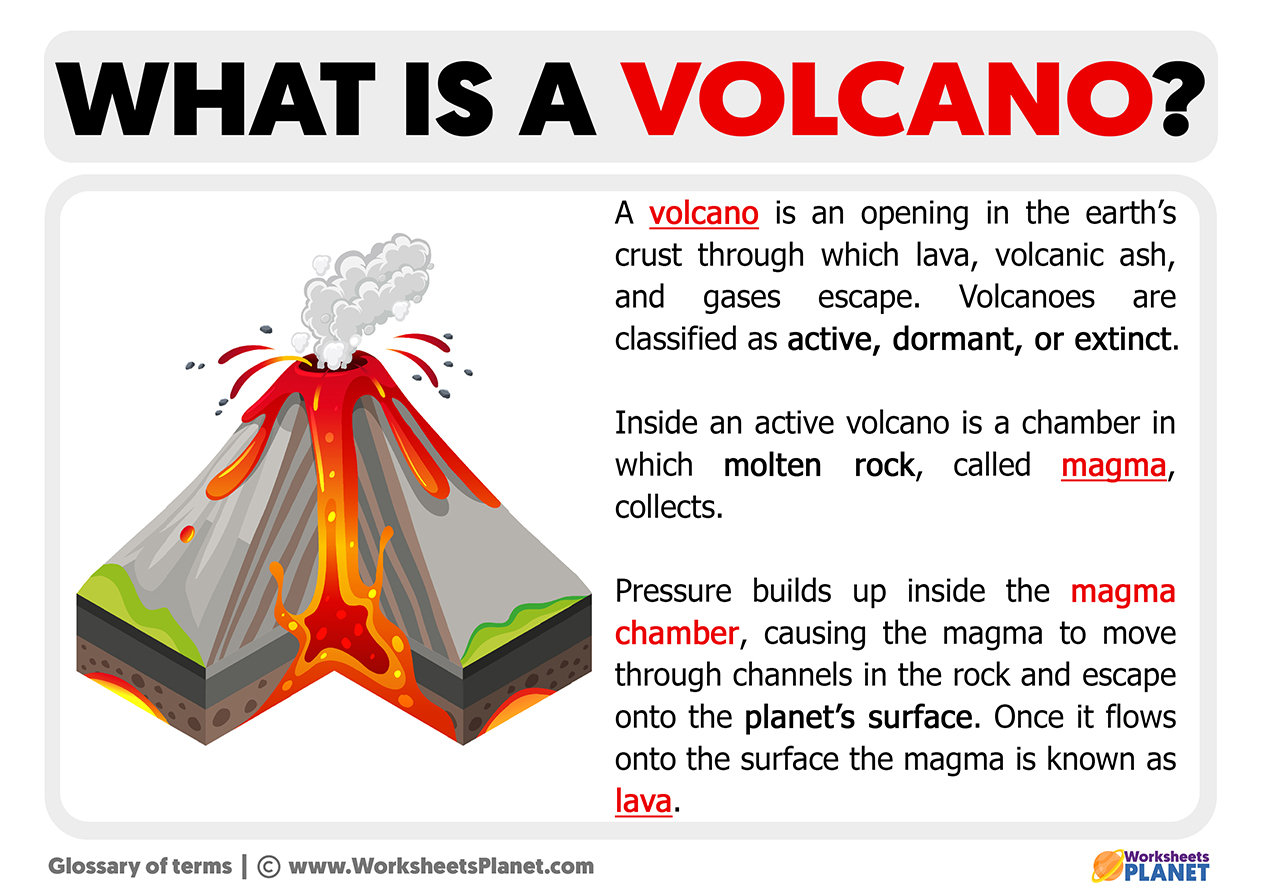A volcano is a mountain or hill with an opening through which gaseous, liquid, or solid materials can escape from the interior of the Earth. A volcano is a fissure in the Earth’s crust, on which a cone of molten and solid matter accumulates and is thrown through the chimney, from inside the Earth. At the top of this cone is the crater. When activity occurs in a volcano, the volcano is said the volcano is erupting.

Volcanoes are generally structures composed of fragmented material and lava flows. Through the chimney comes the molten rock from the Earth’s mantle, known as magma. Once the magma reaches the surface, it loses the gases it contains because it evaporates, and when it runs down the slopes of the cone, it is known as lava. This cone is formed by successive solidified layers inclined towards the outside of the chimney.
The ejected rocky material can reach (2-62 miles) in height. Depending on its chemical composition, freshly emitted lava usually borders on temperatures between (1,300º-2,200ºF).
Rocks that form from cooling magma are called igneous rocks. If the cooling occurred inside the Earth, and the molten rocks did not reach the surface, they are called intrusive igneous rocks. When the rock has been formed from the cooling of lava on the surface, it is called extrusive igneous rock. There are also igneous rocks that cool at great depths, and these are known as plutonic rocks.
What is the structure of a volcano?
The parts of a volcano are the volcanic cone, the magmatic chamber, the chimney, and the crater.
- The magmatic chamber is where the molten rock is stored, which can come from the Asthenosphere (100-700 kilometers, at plate boundaries, ridges, and subduction zones) or from the Lithosphere (by decompression of solids, they become liquids ), which forms lava.
- The chimney is the conduit through which the lava ascends.
- The crater is the part of the volcano where the materials are thrown out.
- The volcanic cone is the agglomeration of lava and fragmented products. It is also possible that in the fractures of the volcanic cone or eruptions, adventitious craters are formed that open on the flanks or at its base and whose secondary chimneys communicate with the main one.

